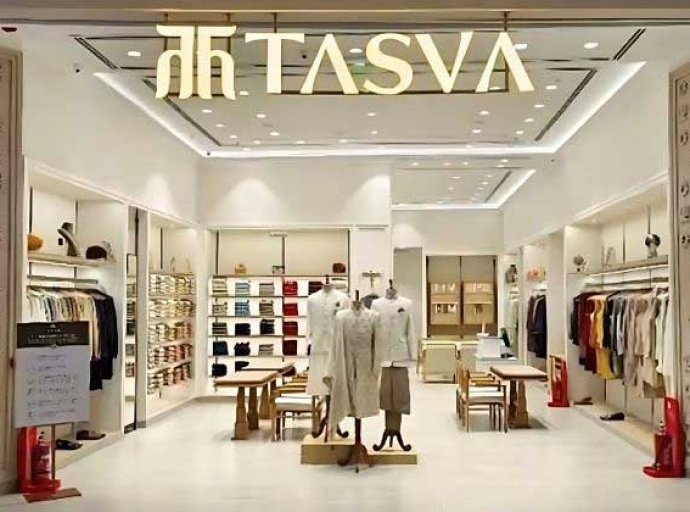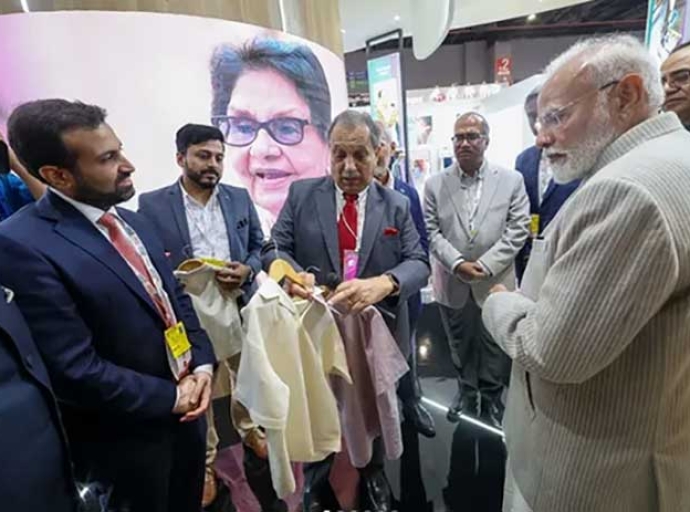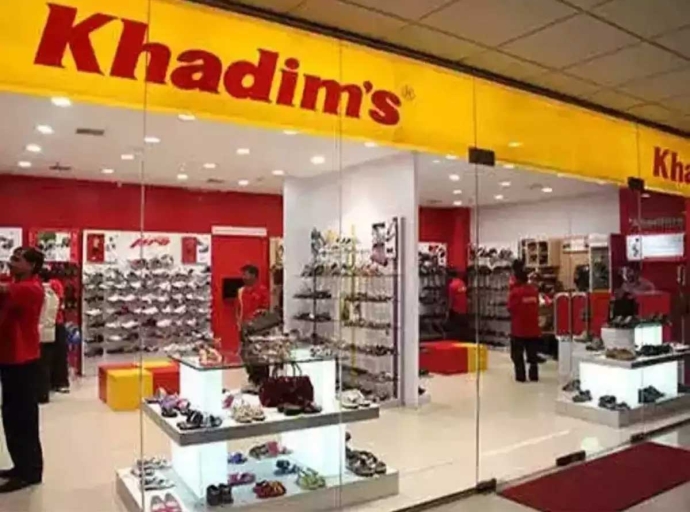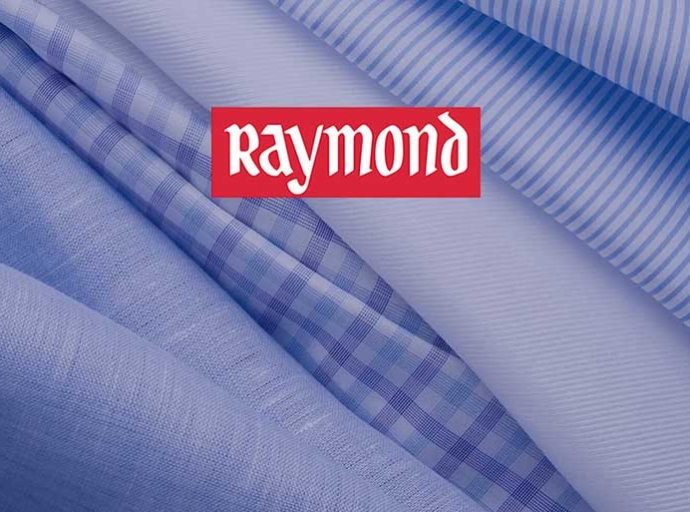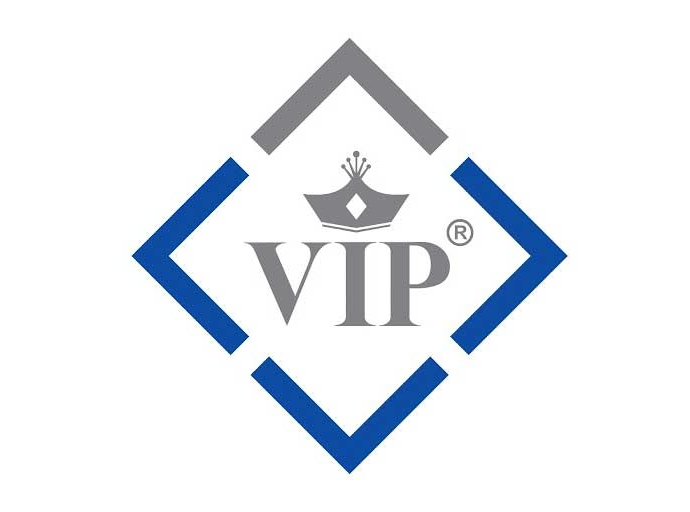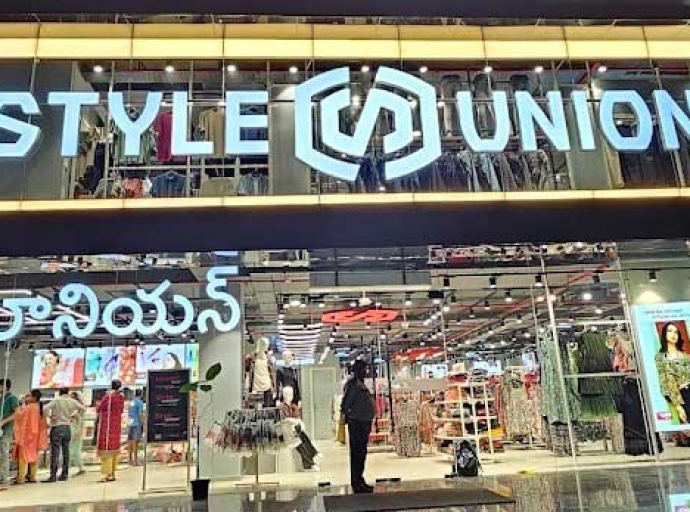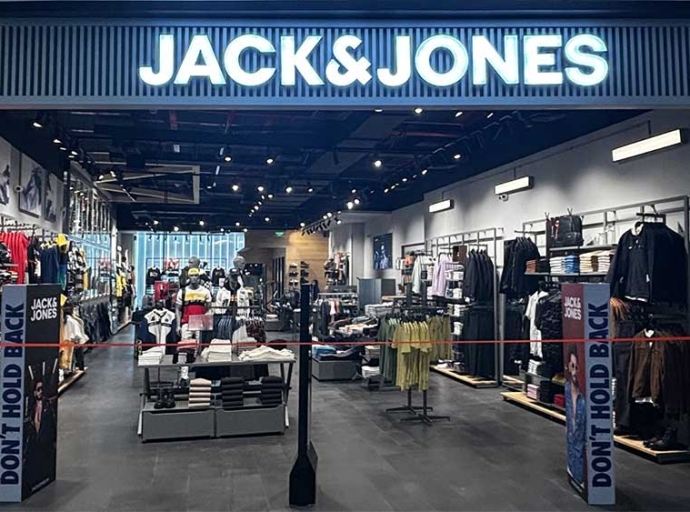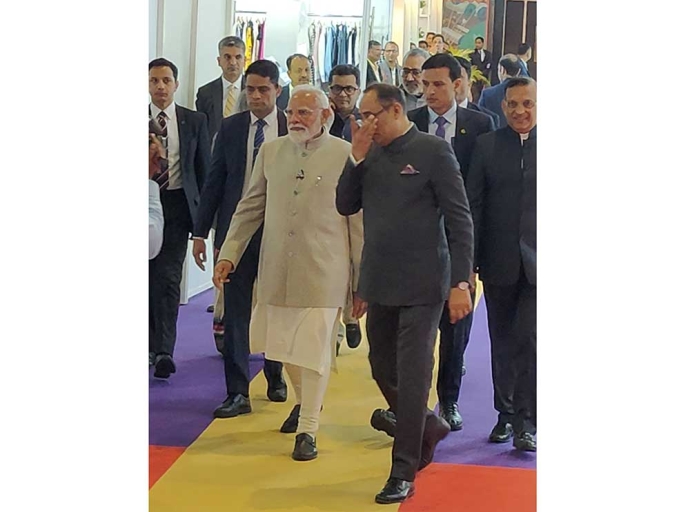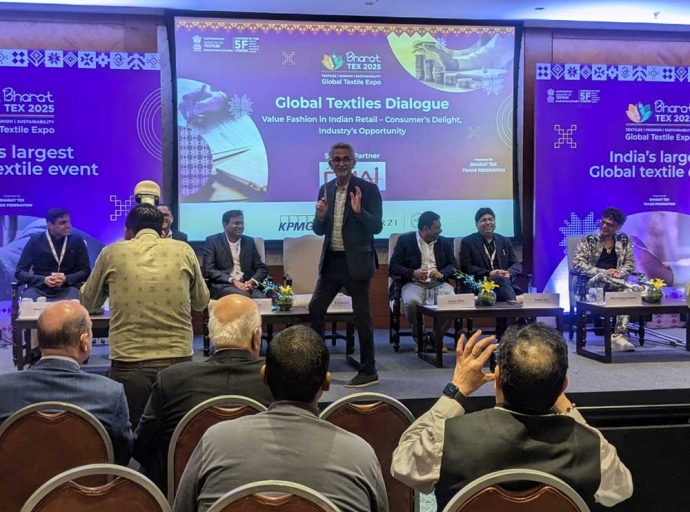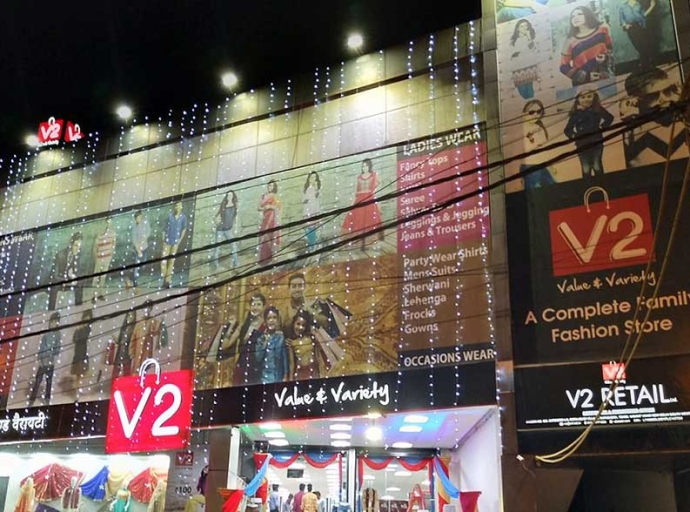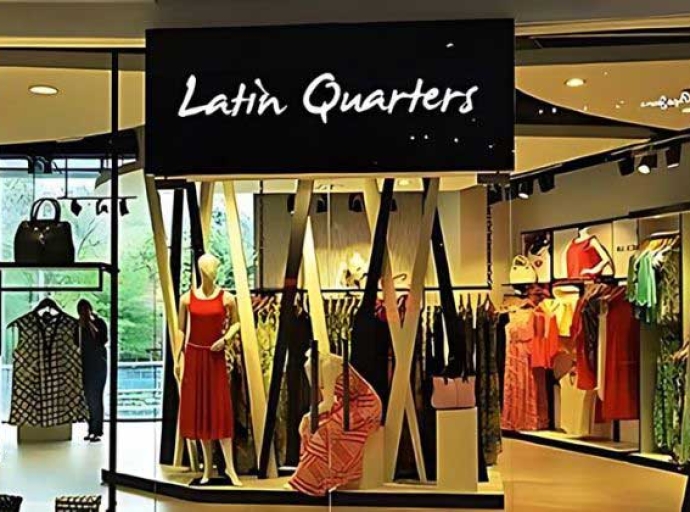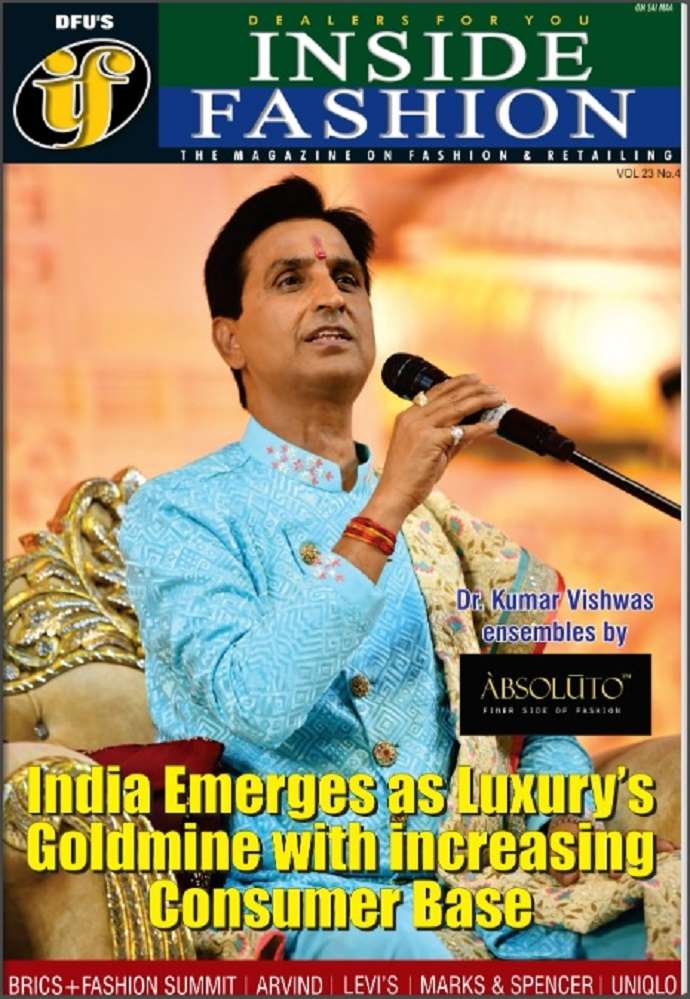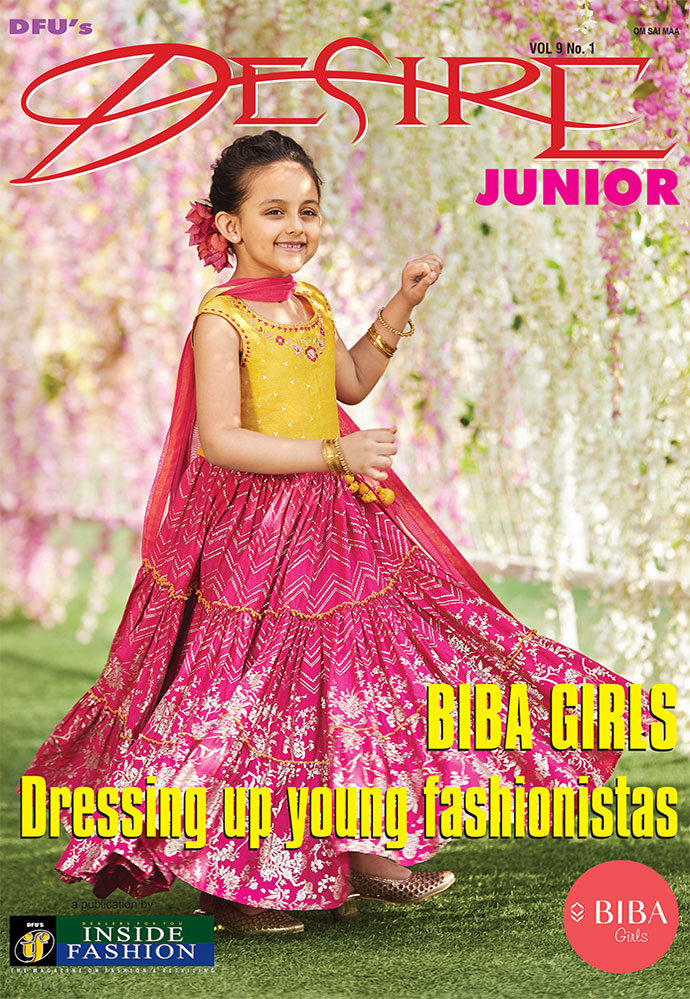17 February 2025, Mumbai
Prime Minister Narendra Modi and Minister of Textiles Giriraj Singh visited the Clothing Manufacturers Association of India’s (CMAI) Brands of India Pavilion at Bharat Tex 2025 in New Delhi. The pavilion featured over 40 leading apparel brands, showcasing the strength of India’s domestic apparel sector. Additionally, CMAI played a key role in introducing over 100 MSME exhibitors in categories like apparel, textiles, start-ups, and innovation.
CMAI’s role in Bharat Tex 2025
As a key participant in the Bharat Tex Trade Federation, CMAI highlighted India's apparel industry strength through its Brands of India Pavilion. It also led panel discussions and launched major sustainability initiatives, including the SU.RE website in collaboration with the United Nations. Additionally, CMAI introduced a Sustainable Supply Chain Directory in partnership with the Centre for Environment Education (CEE) and the Global Alliance for Textile Sustainability Council (GATS). These initiatives aim to foster collaboration among brands, manufacturers, policymakers, and sustainability experts, shaping a more resilient and eco-friendly future for Indian fashion.
Speaking at Bharat Tex 2025 at Bharat Mandapam, Prime Minister Modi highlighted India’s rapid growth in the textile sector. "Today, we are the sixth-largest textile exporter in the world. Our exports have reached Rs 3 lakh crore. Now, our goal is to take it to Rs 9 lakh crore by 2030. But after seeing today’s enthusiasm, I feel this target will be achieved even sooner," he stated.
CMAI highlights sustainability and innovation
Santosh Katariya, President of CMAI, emphasized the shift toward sustainability and innovation in India’s apparel sector. “It is a moment of immense pride for CMAI to present the Brands of India Pavilion at Bharat Tex 2025. The presence of Prime Minister Modi and Minister Giriraj Singh highlights the government’s strong support for the apparel sector, which plays a vital role in economic growth and employment generation,” he said. He reiterated CMAI’s commitment to helping Indian apparel brands, manufacturers, and start-ups compete globally.
Rahul Mehta on CMAI’s vision for the future
Rahul Mehta, Chief Mentor of CMAI, highlighted the association’s contributions at the event. “CMAI’s initiatives at Bharat Tex 2025 played a crucial role in fostering growth and innovation. From showcasing India’s top homegrown brands to driving policy-led initiatives like Indiasize and value retailing, CMAI has been instrumental in strengthening India’s global competitiveness. The enthusiastic participation at the event reaffirmed the industry’s commitment to sustainability and long-term growth.”
Leading brands showcase strength of Indian apparel The CMAI pavilion featured over 40 prominent Indian and international retail brands, including Allen Solly, American Eagle, Arrow, Aurelia, Biba, Blackberrys, Calvin Klein, Forever 21, Flying Machine, House of Masaba, Jaypore, Louis Philippe, Manyavar, Mohey, Pantaloons, Peter England, Sabyasachi, Satya Paul, Tommy Hilfiger, Van Heusen, Westside, and more. These brands have been instrumental in shaping India’s domestic apparel market and expanding global reach.
Bharat Tex is India’s leading textile and apparel trade fair, reinforcing the country’s position as a global manufacturing and innovation hub. The four-day event in New Delhi brought together industry leaders, policymakers, manufacturers, and global stakeholders. The event featured exhibitions, panel discussions, business meetings, MoUs, product launches, and interactive pavilions. It aligned with the 5F vision - Farm to Fiber, Fiber to Factory, Factory to Fashion, and Fashion to Foreign Markets - highlighting India’s manufacturing strength, sustainability efforts, and technological advancements.
Latest Fashion news


